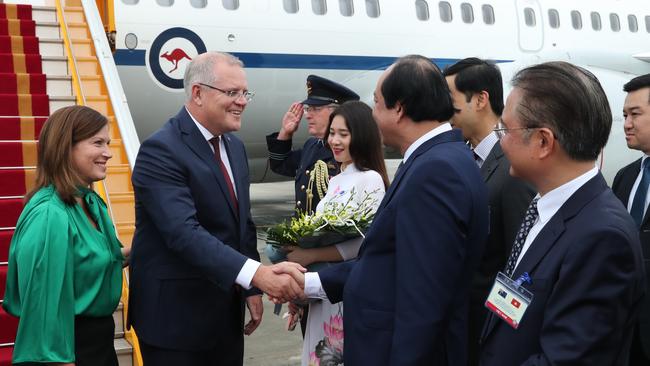
One way you know you’re in a situation somewhat resembling a Cold War is that the big country on the other side becomes the backdrop for everything you do with every third country.
Vietnam’s ambassador to Canberra, Ngo Huong Nam, made sure none of us missed the point when he called for Canberra’s support for Hanoi in its dispute with Beijing in the South China Sea. Beijing has sent coastguard and other vessels into Vietnam’s exclusive economic zone around the Spratly Islands, over which Beijing claims sovereignty, with no plausible case.
While Canberra does not take a formal position on the merits of rival claims in the South China Sea, it has many times, and rightly, criticised Beijing’s actions there.
Vietnam is one of the fastest- growing economies in Southeast Asia. As Singapore’s former prime minister the late Lee Kuan Yew observed, the Vietnamese are “a hard people” capable of tough economic and strategic actions.
Alone among modern Southeast Asian nations, they have fought a short, border war with China in 1979.
It is, of course, an utter disgrace that no Australian prime minister has visited Vietnam for bilateral talks since Paul Keating in 1994.
I have just returned from three months in London and was astonished by the constant flow of visiting Australian cabinet ministers and senior officials.
Each of these visits was justified, but the bipartisan lack of senior travel across Southeast Asia, beyond Singapore and Indonesia, is a longstanding failure in Australia’s political culture.
Our trade with Vietnam has been growing at 11 per cent a year for the past five years, a rate second only to our trade with India. Last year, two-way trade with Vietnam was a healthy $15 billion.
Amid our promiscuously proliferating strategic partnerships, Vietnam is one. This should not blind us to the fact that all the contradictions of our political culture with China’s political culture are replicated on a smaller scale there.
Vietnam remains a communist dictatorship and our soldiers fought and died to stop that communist dictatorship from gaining control of the whole of Vietnam.
Vietnamese boatpeople — refugees from that communism — formed the first wave of mass Asian immigration into modern Australia. Nonetheless, it is right that our countries have transcended that past and are good friends, within those political limits.
It is also worth pointing out that it is an equally ludicrous length of time since an Australian prime minister has visited Thailand. The politics run like this: you can visit a communist country which is a fraction less repressive than it used to be, but you can’t visit a democracy that is a fraction less democratic than it used to be.
That’s nuts too and the policy we adopted for a long time of limiting high-level dialogue with Thailand was counter-productive and harmful to our interests.
Southeast Asia is critically important to Australia in its own right. It is the nearest substantial regional economy and a primary area of strategic consequence for us.
Nonetheless, it is also the case that a good China policy needs a good Asia policy, which means Southeast Asia, Japan, India and South Korea.
That in his so far short and hyperactive time as Prime Minister Morrison has travelled to both Singapore and Vietnam for bilateral visits speaks well to his strategic priorities.
A consistent pattern of prime ministerial and senior minister travel across Southeast Asia should be second nature for any Australian government. There’s a lot of business for us to do, in Hanoi and across Southeast Asia.
* An earlier version of this story stated no Australian prime minister had visited Vietnam since 1994.




China is the backdrop to Scott Morrison’s visit to Vietnam.